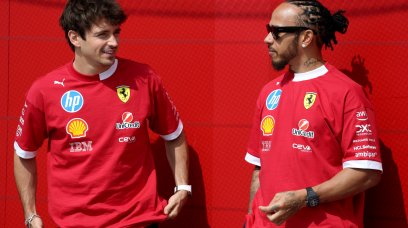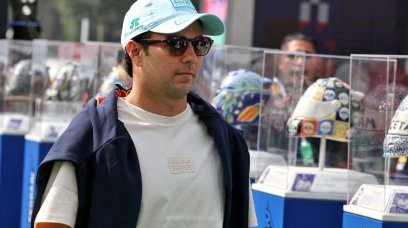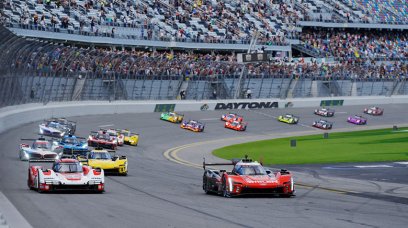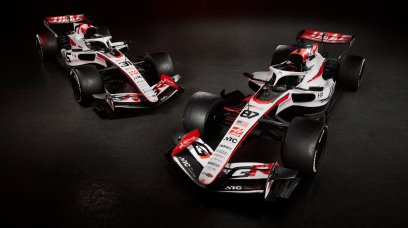When Red Bull were found to have breached the Formula 1 cost cap regulations by overspending, much discussion centred on whether the circumstances around the breach constituted a penalty. The overspend of $4 million was largely due to a series of admin errors, with some discrepancies over which amounts would be counted within the budget cup, such as catering costs, listed parts and HMRC rebates. A hefty financial penalty coupled with further restrictions on their aerodynamic development put a vote of confidence in a system; if you breach the agreed amount, you will be penalised. But it exposed the infancy of the rules which have been long overdue at the pinnacle of motorsport. Now F1, the teams and the FIA have worked out how to enforce the process, many aspects of the rules still need to be refined to prevent teams from incurring unwanted penalties. Under the current rules, teams are restricted in how much they can spend yearly by $145 million. But there is an additional 'hidden' Capital Expenditure cost which teams must also ensure they do not overspend. "There is a CapEx, a capital expenditure version of the cost cap," explains Williams Team Principal, James Vowles. "It's a bit complicated, but [it's] $36 million spread across four years. Every year you can spend six or seven of that, if you just do it fairly equally." Increasing the CapEx is a big part of how Williams plan to catch up to their rivals, as they look to improve their facilities to rival championship-winning teams.
Williams want parity with other teams
The CapEx forms an important part of how teams invest in their infrastructure. If they do not have the same level of facilities, it's highly unlikely they will be able to produce a car with the same performance as top outfits such as Mercedes, Red Bull and Ferrari. Prior to their 2012 fluke win with Pastor Maldonado, Williams had not won a race since the 2004 Brazilian Grand Prix. Since then, the team has been on a mission to rebuild, with Vowles admitting that most of their infrastructure is now 20 years out of date. "If I take an example of things that were in Williams, when a designer releases a part, it sort of goes into a black hole. There's emails going backwards and forwards between production to try and find out where their part is, how it's being upgraded, how big it is, how long it will take," explains Vowles. "Normally, that would go into a digital system that can be tracked to understand what the car gets made up of. Bear in mind there are 17,000 components, so by the time you have designers doing this 17,000 times, you get lost and you have inefficiencies. The software to fix that isn't £100, but that's millions and even up to tens of millions if you get it right." Much of Williams' current investment has been on the early building blocks including machines, simulators, and software. Vowles believes an increase in the CapEx could enable teams at the back of the grid to invest further in facilities which enable them to improve their chances of moving forward. He explained: "What we're looking for is the ability to show where we are today, where the benchmark is, and the ability to spend in order to catch back up to that benchmark."
Other teams welcome conversation on 'complex topic'
Outdated processes can often be the source of where teams are struggling with performance on track. McLaren has seen their form stagger in recent years, owing to a complex wind tunnel arrangement which sees them use an old Toyota facility offsite in Cologne. This prevented the team from keeping up with the aggressive and fast developments required in F1. Over the last few years, the team has invested heavily in a new wind tunnel and simulator, which it plans to put online this year in time for it to be ready to develop their 2025 car. Team Principal Andrea Stella says he would like to see a "relaxing" of the CapEx limits, but admits that it will be a "complex topic" to discuss. "We understand where James is coming from, because McLaren is a team that has operated without infrastructure, or infrastructure at the same level as some top teams, for a long time, said Stella. "This is the reason why we have invested, largely to be able to have a new wind tunnel and our simulator, a composite facility. Even if these infrastructures haven't seen the light yet, but we are in the final sprint. "We are operating at the limit in terms of cost cap, from a CapEx point of view. And actually we would welcome and we welcome a conversation about relaxing some of these limits, because we would like to further invest. It's a complex topic."
Alpine: F1 could implement a similar system to ATR for CapEx
Aston Martin has been one of the standout teams of 2023, emerging as a genuine front-runner after a disappointing 2022. While the team has made some key signings to its technical team, part of its recent success is down to utilising its wind tunnel hours effectively. It is no surprise that Aston Martin was one of the main advocates for the Aerodynamic Testing Restrictions (ATR), headed by current Alpine Team Principal, Otmar Szafnauer. The ATR restrictions give teams that are lower in the Constructors' Championship increased aero testing hours based on their finishing position the previous season. This is adjusted midway through the season to reflect the current finishing order. Szafnauer believes a similar model could be employed for CapEx to enable teams at the back to "level the playing field" when it comes to their infrastructure. "I think it's only fair that we level the playing field on infrastructure, and the tools that you fundamentally need to go Formula 1 racing," added Szafnauer. "We've done it once already for wind tunnels. For example, Aston didn't have a state-of-the-art tunnel and we gave them dispensation, gave everyone dispensation on wind tunnels." Even though the cost cap was introduced to make F1 more competitive on track, there is still work behind the scenes before teams can truly compete at the same level. The FIA has recently issued a Technical Directive to clamp down on a loophole in the system involving intellectual property sharing between in-house departments. Making adjustments to the CapEx will be the next important step to refining some of the most complex cost cap regulations in world sport.
Most read









